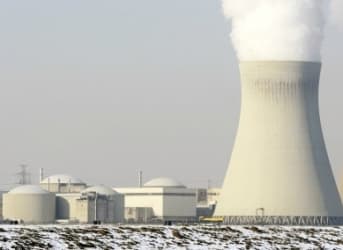Since the Fukushima incident, investors have given up on the idea of investing in nuclear power and anything that pertains to it. The Economist even said that nuclear power was the “dream that failed.” This statement wasn’t made irrationally; as Japan and Germany closed down all of their operating reactors due to that incident. These closures also prompted Japanese utility companies to sell uranium on to the open market, which helped trigger a large price decline.
(Click to enlarge)
Despite recent events though, the future of the uranium mining industry, and nuclear power, still looks bright.
Nuclear Power Growth
In the nuclear power industry, one country is considered the main catalyst for growth, and that is China. With 26 reactors in operation, China is now transitioning into the second phase of its nuclear power program. According to the world nuclear association, 24 reactors are under construction in China, with some of these being high temperature, gas cooled reactor plants. In fact, China has an ambitious goal of doubling its nuclear generation capacity by 2020. Related: OPEC Still Holds All The Cards In Oil Price Game
It’s not just China that has ambitious plans to increase its nuclear capacity; Russia is also increasing its nuclear fuel use as well. Russia has eight reactors under construction at present, with one of them being a large fast neutron reactor. These plants are expected to increase Russia’s nuclear capacity by 50 percent this decade.
And there’s more. India has six reactors under construction. Finland is constructing its fifth large nuclear reactor with the first estimated to come on line by 2017. South Korea is now planning to restart four nuclear reactors by 2018, and the U.S. has five nuclear reactors under construction with plans to build five more after that.
The Wild Card
Although China, Russia, and other nations’ potential growth are viewed as great future investment opportunities in the uranium and nuclear energy sector, Japan remains the main driver of growth in the current market. Japan’s growth is considered a wild card, due to the fierce political opposition that has surfaced in Japan after the Fukushima incident.
Despite the unpopularity of nuclear power use in Japan, some believe that Japan will inevitably have to restart its nuclear reactors for economic and security reasons.
Before the Fukushima accident occurred, Japan’s economy was driven by its large trade surpluses, which it achieved year after year. However, since Fukushima, Japan reversed that trend, and began posting trade deficits on a yearly basis. In the year 2011, Japan recorded its first trade deficit of 2.49 trillion yen ($32 billion), in 2012 it recorded a trade deficit of 6.93 trillion yen ($78 billion), in 2013 it posted a trade deficit of 11.47 trillion yen ($112 billion), and in 2014 it posted a trade deficit of 12.8 trillion yen ($106 Billion). Related: Lessons From The Failed Rare Earth Investment Hype
These trade deficits are directly correlated to the shuttering of the nation’s entire nuclear fleet, because the shortfall in nuclear power was replaced by imported fossil fuels. Before the Fukushima incident occurred, 30 percent of Japan’s energy needs were provided by nuclear power, with plans of expanding its use by 50 percent.
Another reason Japan will inevitably revert back to its past use of nuclear power, is due to the consequences Japan had to suffer during the oil shock of 1973, due to OPEC’s oil embargo. During this embargo, Japan suffered from a severe energy shortage, nearly derailing all of its economic progress dating back to WWll.
When this embargo ended, Japan conducted a national energy study to find out how the country could implement an energy policy that would protect supplies from future embargoes and geopolitical turmoil. The ultimate conclusion of the study was that Japan needed to invest heavily in the use of nuclear power, which could supplant imported fossil fuels for electricity. After that study, the development of nuclear power was considered a national priority.
This is why despite strong political opposition to the continued use of nuclear power, Japan has approved a restart to one of its reactors for later this month, as well as a second one for this September.
Why this can cause a Uranium Deficit
ADVERTISEMENT
Despite claims to the contrary, nuclear power is not dead. In fact it is still growing around the world. But rising demand will also put a strain on the supply of uranium, and many analysts are forecasting a uranium deficit sometime this decade. Paladin Energy, a uranium producing company, is expecting a deficit in 2016. Paladin claims that uranium prices will need to almost triple in order for new supplies to become economic. Other analysts believe that we will see a supply deficit by 2019-2020. This is why China is actively looking to purchase uranium mining companies, while they are still cheap.
Whether we see a deficit or not, no one knows for sure, but what we do know is that production costs are increasing rapidly just as demand is set to rise, starting in 2016-17. When combining these two factors, one can easily conclude that higher uranium prices are coming. But that is probably necessary to halt the closure of mines, and bring new supplies onto the market.
The dream of nuclear power still looks bright. The need for baseload electricity is too great. The only thing that could derail the industry is if another Fukushima type event occurs, at which point, all bets will be off.
By John Manfreda for Oilprice.com
More Top Reads From Oilprice.com:
- Now Is A Good Time To Pick Up Some Oil Stocks
- Cyber Threat Has Oil And Gas Majors On Edge
- The Next Fracking Boom May Be Closer Than You Think




















supply to the Ruskies ..